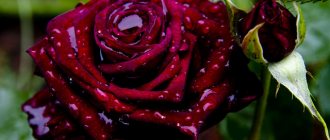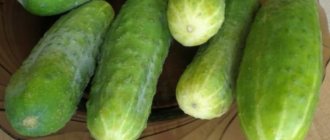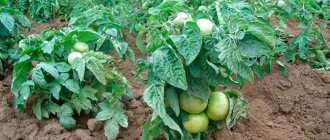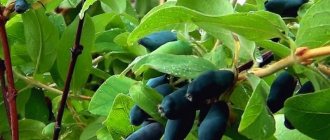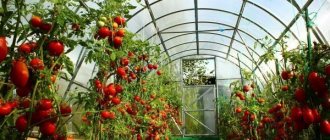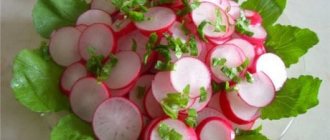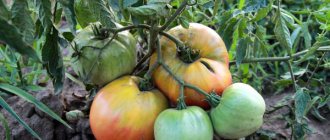Climbing roses have long won the hearts of both experienced and novice gardeners. These plants are a spectacular and chic decoration for any garden. Climbing roses look no less organically in vertical gardening elements and flower arches. Modern selection has solved many problems for rose gardens: the abundance of varieties will satisfy the most demanding connoisseurs of beauty, and it is possible to cultivate roses in any climate zone, even with low winter temperatures and harsh winds. We talk about which variety of climbing roses to choose among their diversity in our article.
Features of choosing climbing roses for the Moscow region
Beautiful and fragrant roses for growing in the Moscow region must meet certain requirements. It is advisable to choose varieties:
- with increased frost resistance - bushes must withstand temperatures dropping to -25 ° C or more;
- with resistance to drought - in the summer in the Moscow region there are often long periods of hot and sunny weather;
- with early flowering - autumn in the region begins at the standard time in mid-September or October, so late varieties remain decorative for too short a time.
Also, when choosing, it is necessary to give preference to varieties with high immunity to viruses and fungal diseases. It is good if climbing roses are able to bloom profusely on poor soils with a low content of nutritious organic matter.
International plant grouping
Climbing roses that bloom all summer - winter-hardy varieties
To simplify the definition, experts have introduced a special system in which all varieties of climbing roses are divided into several categories. Each of them has certain features that can be useful to know about.
Multiflora
Gardeners who like small-flowered but densely blooming varieties should choose this popular category. The plant is literally strewn with flowers - in some cases their number reaches fifty. And the length is impressive - the lashes often reach seven meters.
There are real giants among the flowers
It is important that multiflora is quite unpretentious, thanks to which it can be grown even in central Russia with its harsh climate, and will bloom profusely, delighting the gardener and his loved ones every summer.
Vishuriana
Gorgeous flowers with petals of non-standard shape, which will definitely appeal to lovers of unusual flowers. It’s nice that the color range is quite rich - yellow climbing rose, red, pink, and many other colors can be found here. The length of the lashes is average - mostly about 4 meters.
Lambert
The main feature of these varieties is the shape of the petals. They are elongated, which is generally not typical for roses. The flowers are quite large, but not too numerous. But the magnificent smell that they spread around will delight even the most picky connoisseur.
Therefore, planting such a miracle on the site is completely justified.
Cordesa
For beginners in the world of roses, the best solution will be the varieties of the Cordes category. They have a number of important features:
- winter-hardy,
- resistant to diseases and pests,
- not too high (about 1.5-3 meters),
- blooming profusely several times per season - from mid-summer to mid-autumn.
So, this miracle, the basis for which was laid by famous German breeders, will definitely not disappoint even the most picky gardener.
Fact! The Cordes rose got its name from the name of the German breeder Wilhelm Cordes.
Banks
If the reader likes yellow climbing roses, then it makes sense to take a closer look at this category. This is truly an amazing plant. At least start from a height - the lashes, with good care, can reach 12 meters!
Some varieties have flowers collected in inflorescences
Flowering begins in mid-to-late May - small flowers cover the vines so densely that the plant itself is almost invisible underneath them. True, there is practically no smell from them, but the sight is truly breathtaking. An additional advantage is the absence of thorns on the stems.
Alas, these varieties are more suitable for the south - in central Russia, not to mention the northern regions, the plant may not survive the harsh winter.
Claiming
But these roses, although they are climbing roses, do not need support - bushes up to three meters high have a stem sufficiently solid to support themselves. It blooms quite profusely, the flowers are very large. Moreover, this happens twice per season, although the second wave is much weaker than the first.
Unfortunately, just like Banks's rose, it is not well suited for regions with a temperate climate - it is better to grow Climing in the south of Russia.
The best winter-hardy varieties of climbing roses for the Moscow region
On average, the temperature in the Moscow region in winter drops to -25 °C, but colder winters sometimes occur. The higher the frost resistance of climbing roses, the fewer problems they will cause when growing.
Polka
A beautiful climbing rose grows up to 3 m wide. It bears large double buds up to 12 cm in diameter, the petals of the flowers are soft apricot or deep pink. Under the sun's rays they fade and acquire a creamy color.
The climbing variety Polka was developed in France in the 1990s. Gardeners value the crop not only for its attractive flowering, but also for its pleasant aroma. The bushes emit a particularly strong smell in the evening; it is beneficial to plant them near the veranda or the facade of the house.
Frost-resistant climbing rose for the Moscow region Polka has good resistance to fungal diseases and pests. Calmly tolerates high humidity and does not crumble during the rainy season. During the flowering period, the shoots bend low to the ground under the weight of the buds, so it is recommended to lay the branches on a support.
Polka tolerates winters well in the Moscow region, but in the fall it is advisable to cover it
Super Dorothy
The winter-hardy, repeat-blooming rose of German selection is characterized by good resistance to pests and infections. Requires minimal maintenance in the garden. It is enough to water the bushes in severe drought and feed them with minerals and organic matter from time to time.
The shoots of the climbing rose reach 3-4 m in length, there are no thorns on the branches. The buds are small, collected in clusters of 20-40 pieces, with pink-crimson petals. It is recommended to use the variety in landscape design in the Moscow region in the design of supports and arches, since the shoots of the shrub are very soft and flexible.
Attention! Super Dorothy blooms only in July, but the decorative period continues until frost
.
The Super Dorothy variety fades in the sun, so it is better to grow it in a shaded place
Small-flowered varieties
Which roses are the most unpretentious and winter-hardy?
There are significantly fewer types of climbing shrubs with small flowers:
- Snow Goose – has more than twenty roses on one brush. It has dark foliage and almost no thorns. Continuous flowering is distinguished by solemn splendor. No complex care required.
- Rambling Rector is an old variety that grows up to five meters in height. Its pale green foliage is very aesthetically pleasing. On one brush there are four dozen semi-double roses. The creamy tone becomes snow-white after fading. The variety has good disease resistance. The shoots are easy to take cuttings. The bush is frost-resistant.
Fact! Climbing varieties of permanent flowering roses that can safely withstand the cold can be planted even in Siberia.
The most popular among domestic rose growers are two varietal varieties. This:
- Super Excelsa;
- Super Dorothy.
Super Excelsa
This culture has bright double fuchsia flowers. The diameter of one rose is five centimeters. The height of the stem part is about 4 meters. The variety tolerates temperature contrasts without harm.
On a note! Direct exposure to sunlight discolors rich buds, so the variety is recommended for shady areas.
Super Dorothy
This varietal variety is characterized by high frost resistance. Roses are unpretentious. Their flowering time occurs in the last days of May. A three-meter shrub with bright green leaves is distinguished by very beautiful crimson rosettes.
Rose variety Super Dorothy
The most unpretentious varieties of climbing roses for the Moscow region
The climate of the Moscow region as a whole is not considered extremely harsh. However, the region experiences sudden temperature changes, prolonged rains and sudden frosts. Therefore, varieties of climbing roses with increased hardiness feel most comfortable.
Santana
The popular climbing rose of German origin is particularly unpretentious and highly frost-resistant. Recommended for cultivation in the Moscow region, used in the design of fences, gazebos and arches.
The height of the bush is 23 m. The shoots are elastic and strong, they can rise up even without support. The leaves are dark green, glossy, and look very decorative. In June, Santana bears semi-double large flowers, collected in clusters of up to seven pieces. The buds can reach 10 cm in diameter, their petals are bright red and velvety.
The climbing rose Santana continues to bloom until September with short breaks during the summer.
Don Juan
A lushly flowering climbing rose for the Moscow region has good frost resistance down to -25 °C. Does not require complex care, tolerates drought and prolonged rains.
The shoots reach 4 m in length and are covered with large sharp thorns. During the decorative period, 1-2 large buds about 10 cm in diameter are formed on each stem. The flowers are cherry-red in color and emit a strong, pleasant aroma.
Climbing rose Don Juan rarely suffers from black spot and other ailments
American Pillar
The rose grows quickly, the length of the stems densely covered with thorns reaches 3–5 m. It blooms very profusely, but once. The flowers are non-double, medium-sized (4–5 cm), saucer-like. There are about 20 of them in an inflorescence. Bright pink petals with a snow-white base fade slightly in the sun. The aroma is light, almost imperceptible. The bush does not suffer in the shade and is easy to take cuttings.
The decorative effect of the American Pillar rose is added by large leathery leaves, which turn yellow in the fall and do not fall off for a long time.
The best shade-tolerant varieties of climbing roses for the Moscow region
Many climbing roses need plenty of sun. But in the Moscow region, cloudy and rainy weather can persist for a long time in the summer. Shade-tolerant varieties feel best in such conditions.
Florentina
The variety of German selection is considered to be quite young - it entered the Russian market in 2011. The bushes reach a height of about 2 m, have shiny bright green leaves and flexible shoots. At the beginning of summer, large buds of a light red or scarlet hue with a yellow core appear on the branches. Up to 100 flowers can form on one bush during the season. To prevent the buds from burning out, it is recommended to plant climbing roses in the Moscow region in the shade - the variety does not need a lot of sunlight.
Florentina demonstrates high resistance to black spot and other fungi and tolerates winter cold well. In landscape design, the variety is used for single and group planting in borders and for cascade cultivation.
The disadvantages of the climbing rose Florentina include a weak, barely noticeable aroma
New Dawn
The climbing rose was developed in the United States in the 1930s. The bushes are large in size, the shoots reach 3-4 m in length. The branches are densely covered with bright green leaves, which are largely responsible for the decorative appearance of the plant.
At the end of May, large and dense buds up to 8 cm in diameter appear on the shoots of climbing roses in the Moscow region. The petals are pinkish, gradually becoming cream and white after the flowers open. The decorative period lasts until September.
The climbing rose New Down has good frost resistance. In mild winter conditions, the shrub does not even need to be covered; it is enough to mulch it with dry leaves or spruce branches.
The main problems when growing New Down climbing roses are caused by numerous sharp thorns.
Elf
The bush is of medium height (2.5–3 m), spreading, the shoots droop under the weight of the buds. Flowering is almost continuous. The buds are single or form inflorescences of three. Flowers are 8–14 cm in diameter, densely double, of an unusual creamy-greenish hue. The aroma is light, with notes of fruit. Flowers do not suffer from the sun, but do not tolerate rain. The bush will not survive in the shade.
In the opening buds of the Elf rose, the outer petals gradually bend outward
The best varieties of climbing roses for the Moscow region for an arch
The photo of the best climbing roses for the Moscow region shows that flexible and long flowering shoots are often used to decorate arches. The most popular are hardy varieties with a long decorative period.
Rosarium Uetersen
The German climbing rose was developed in the 1980s and is distinguished by its good decorative qualities and hardiness. Reaches about 2 m in height and diameter, has arched, strong but elastic shoots. The bright green leaves are medium in size, glossy, the buds are densely double and large, deep pink, up to 10 cm wide. Collected in brushes of 5-7 pieces at the tops of the shoots. Once fully opened, they fade slightly in the sun, but the core remains bright.
The variety blooms for the first time in the Moscow region in June. In mid-summer it takes a short break, and then blooms in waves until autumn. Tolerates winter frosts down to -23 °C, but needs reliable shelter.
Rosarium Jutersen tolerates pruning well and demonstrates resistance to wind and rain
Elf
Another climbing variety of German selection has shoots up to 3.5 m long. During the flowering period, the branches hang beautifully from the arch. The buds are located on the shoots singly or in small groups of 2-3 pieces. The flowers are large, up to 14 cm in diameter, greenish or yellow-cream in color. The rose's large, shiny leaves of a dark green hue are also responsible for the rose's decorative appearance.
The flowering of the variety in the Moscow region continues all summer until autumn. The plant tolerates frosts in the middle zone quite calmly, but it still needs to be covered.
Rose Elf is rarely affected by fungal diseases and does not suffer from pests
Planting and propagation
Climbing roses are planted from mid-April to the end of May or already in the fall, at the end of September. It is most convenient to plant seedlings. First, immerse them in water for a day, then cut off all the leaves with immature and damaged shoots. Trim the root and ground parts so that approximately 30 cm remain.
Treat all cuts with sharpened charcoal, and when working with grafted seedlings, remove everything almost to the graft site. Disinfect the roses in copper sulfate and plant them in 50x50 cm holes at intervals of 1 m. Mix the top layer of soil with organic fertilizers and partially pour it onto the bottom of the hole, and partially spread it on top.
When planting, carefully straighten all the roots so that they do not bend. Cover the hole with soil mixture, compact it and fill it with soil. When the soil settles a little after watering, add more soil and manure mixture. When planting grafted seedlings, the grafting site should be underground at a depth of 10 cm. After this, the rose is hilled up to 20 cm.
In the spring, the planting technique remains the same, but the ground part needs to be shortened to 15-20 cm. In addition, in the spring, climbing roses are covered with film and ventilated for several minutes every day. The film is removed when the risk of night frosts has completely passed.
Photo: aprillesgarden.blogspot.com
The best yellow varieties of climbing roses for the Moscow region
In addition to red and pink climbing varieties, roses with a yellow tint are popular. They look bright in a summer cottage and combine well with other perennials.
Casino
A beautiful, repeat-blooming climbing rose that grows quickly. The shoots reach 3 m in length, 4-5 buds are formed on each stem. The flowers are densely double, bright sunny yellow, more saturated in the core and delicate at the edges.
The shrub is resistant to infections and fungi and develops well in the Moscow region, throughout the middle zone and in the north-west. Often used to decorate vertical structures. For the winter, the shoots are removed from their support, laid on the ground and carefully covered.
Yellow Rose Casino has a pleasant tea aroma
Golden Gate
A climbing rose up to 2 m in height bears white-yellow buds collected in inflorescences of 6-10 pieces. Blooms from June to September. At the peak of decorativeness, bright light buds abundantly cover the entire bush. The flowers reach 8 cm in diameter.
The climbing rose Golden Gate tolerates frost well and is suitable for cultivation in the Moscow region and the middle zone. Provided that it is carefully covered for the winter, the variety can be grown even in Siberia.
Attention! The buds of the Golden Gate climbing rose do not fall off on their own, so they need to be removed as they dry out.
Golden Gate has a pleasant strong citrus aroma
Rosarium Uetersen
A relatively old variety, loved by rose growers all over the world. The bush is large, the stems grow up to 2–3 m. The thorns are thin. Repeat flowering, inflorescences of 3–5 buds. The flower is cup-shaped, as if flattened, of a deep crimson color; in the sun it turns into pinkish-silver, and does not suffer from rain. Diameter is 8–9 cm, the petals are wavy, the bud is very densely packed. The aroma is light, fruity. The growth rate of the bush does not differ.
The rose Rosarium Jutersen has petals arranged in a very unusual way, reminiscent of tiling, and the core of the flower is divided into four parts
The best varieties of climbing roses without thorns for the Moscow region
Caring for most climbing roses is made difficult by the abundant sharp thorns on the shoots. But some varieties of the crop have smooth branches.
Wartburg
The ancient climbing rose has long and smooth shoots up to 6 m long. The variety is not afraid of high humidity and little sun, and tolerates cold and drought well.
At the beginning of summer it blooms with small, densely double buds up to 2 cm in diameter. The petals are light pink, crimson or amethyst, with a light delicate aroma. The buds are collected in large clusters of up to 40 pieces; at the peak of decorativeness, the green foliage of the shrub is almost invisible under the flowers.
The climbing rose Wartburg was bred back in 1910
Pierre de Ronsard
French thornless climbing rose is well suited for growing in the Moscow region. It rises to 1-3.5 m and is characterized by slow development. The shoots of the shrub are hard and thick, smooth, the leaves are dark green and glossy.
At the beginning of summer, the variety produces large buds 7.5-12 cm in diameter. The coloring is very interesting. The petals are carmine pink at the core and creamy white or beige at the edges. They emit a moderate aroma.
In the Moscow region, the buds of the Pierre de Ronsard rose often do not open completely and retain an attractive density
Permanent bloom roses
Lush, fragrant roses are welcome inhabitants of gardens. Flowering throughout the summer season is typical for a special varietal group. Climbing roses that bloom all summer - winter-hardy varieties were bred by professional breeders.
Arch of climbing roses
On a note! Some shrubs bloom in waves. Other varieties are distinguished by replacing faded buds with fresh ones.
Tips for gardeners on choosing a variety
- In fact, every gardener chooses a variety based on his wishes and goals. If the goal is to create a decorative look at the dacha or near the house, then climbing rambler roses can be an excellent solution.
- It is best to choose several different types of Rambler roses. All species bloom in their own way and with their own characteristics. The most important thing is that each species grows at different times of summer and for different periods of time. By combining several types of Rambler roses you can get an excellent composition that will delight you with its floral mix.
- This “mixture” can be placed near the gate of the house or , conversely, you can make an arch of roses.
- Someone will prefer roses of the Climing variety. The choice is up to every gardener. Each variety and species is beautiful in its own way and has its own advantages, such as, for example, resistance to frost, diseases and harmful insects.
